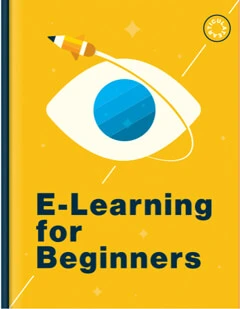Articulate 360: Opt Out of Sending Usage Data to Articulate by Changing Your Privacy Preference
Article Last Updated
This article applies to:
You can help improve Articulate 360 desktop products by sending usage data to our servers. We analyze feature metrics and error reports from Articulate 360 desktop products as well as general, non-identifiable device and browser data data when learners view published output. If you'd prefer to opt out of these analytics, change the privacy preference in your Articulate 360 desktop app. Here’s how.
- Open the Articulate 360 desktop app from your computer’s system tray (by the clock) or the icon on your desktop.
- Click the drop-down arrow in the upper right corner of the app and choose Preferences.
- Uncheck the Privacy box and click Save.
That’s it! Your Articulate 360 desktop products and the projects you publish from this point forward won’t send usage data to our servers. (If you encounter a serious error in an authoring app, you might see an error message asking you to share the details with us. You can choose to send or ignore the error.)
To opt your entire organization out of sending usage data, set the following registry key to true.
HKLM\Software\Articulate\Common\Settings\PrivacyOptOut = true
If you have any questions, contact us at enterprise@articulate.com.
What data does Articulate collect?
If you have analytics enabled, we receive the following data when authors use the product or learners view the published output of a Storyline 360 or Studio 360 course. We only see limited, de-identified data of the author. We don’t see any personal information about the learner or course content. We only collect general and de-identified data to help us improve our products. The lists below detail the specific data being collected from authors using the product and learners viewing the published output.
Desktop Products
- User ID: A unique identifier for the author’s Articulate ID, not their email address
- Analytics ID: A unique identifier for the application’s installation
- Hardware ID: A unique identifier for the computer where the app is installed
- Session ID: A unique identifier for the instance an application is used
- Project ID: A unique identifier for a Storyline project file
- Subscription ID: A unique identifier for the author’s Articulate 360 subscription
Published Output
- Operating system of the computer or mobile device
- Display resolution
- Web browser and version number
- Web browser font download setting (enabled or disabled)
- Web protocol (https, http, etc.)
- Course load time
- Authoring app (Storyline, Presenter, etc.)
- Authoring app channel (stable, beta, etc.)
- Player version (e.g., Storyline 3.23.17522.0)
- Format of the course (e.g., HTML5)
- Platform that the course was published for (Web, LMS, etc.)
- xAPI (Tin Can API) output (yes or no)
- Resume setting (always resume, prompt to resume, or never resume)
- Unique ID for the author that allows us to organize analytics from multiple learners by author
- Unique ID for the course that allows us to organize analytics from multiple learners by course
Can I turn off analytics for individual courses?
Yes. You can share error reports and usage data with us generally and turn them off for individual projects. First, enable analytics in your Articulate 360 desktop app.
- Open the Articulate 360 desktop app from your computer’s system tray (by the clock) or the icon on your desktop.
- Click the drop-down arrow in the upper right corner of the app and choose Preferences.
- Mark the Privacy box and click Save.
Then, follow these steps for each project where you want to turn off analytics.
- Publish your project, then open the folder that contains your published output.
- Open the following file in a text editor, depending on your authoring app, and replace
suppressAnalytics: falsewithsuppressAnalytics: true. Save and close the file.App File Storyline 360 story.html Presenter 360 presentation_html5.html Quizmaker 360 quiz_html5.html Engage 360 interaction_html5.html - If you published for web distribution, upload your published output to a web server. If you published for LMS distribution, open
index_lms_html5.htmlin a text editor and replacesuppressAnalytics: falsewithsuppressAnalytics: true. Save and close the file, then upload the published output to your LMS.


